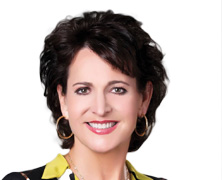Building excitement for the STEM disciplines in today’s youth is clearly one of the most important challenges we face as a nation. Fewer U.S. students are selecting STEM as their academic endeavor, and that’s troubling.
Research shows that children who get interested in STEM at a young age are more likely to pursue this career track. This is the motivation behind Northrop Grumman’s strategy to excite, engage, and educate students early-on to inspire tomorrow’s workforce and maintain the U.S.’s leadership role in innovation and discovery.
As a woman in a technical environment, the lack of girls interested in STEM is a personal concern of mine. A recent report by the Commerce Department stated that “women are vastly underrepresented in STEM jobs and among STEM degree holders, despite making up nearly half of the U.S. workforce and half of the college-educated workforce.” We need to reverse this trend!
As female professionals at Northrop Grumman, it’s our obligation to mentor aspiring candidates and expose them to successful role models. The female engineers and professionals are the best STEM ambassadors, continually reaching out to middle and high school-aged students to serve as tutors, mentors, and more.
For instance, as Presenting Sponsor of the CyberPatriot competition, our program director is a female information technology professional, a role model who’s advocated the merits of STEM to thousands of children nationwide. 2012 marked the first year that a majority female CyberPatriot team was in the national finals; a big step and a trend I expect to continue.
Helping teachers spark the STEM flame is critical. That’s why I am personally involved in The Virginia Initiative for Science Teaching and Achievement, which focuses on high-need schools to improve science teaching and student learning in Virginia. I’m also on the board for the Boys and Girls Club of Fairfax, Virginia, which teaches character building to children early-on, a foundational quality for tomorrow’s leaders.
We need to mobilize our mentors now to help build a pipeline of qualified female STEM professionals and bridge the gap. Creating a diverse workforce and workplace fosters inclusion and engagement and is vital if we are to create and sustain innovation, productivity, and profitability in the future.
I am personally committed to this and will continue to devote my time and energy towards moving in the direction needed for the U.S. to address this challenge.







